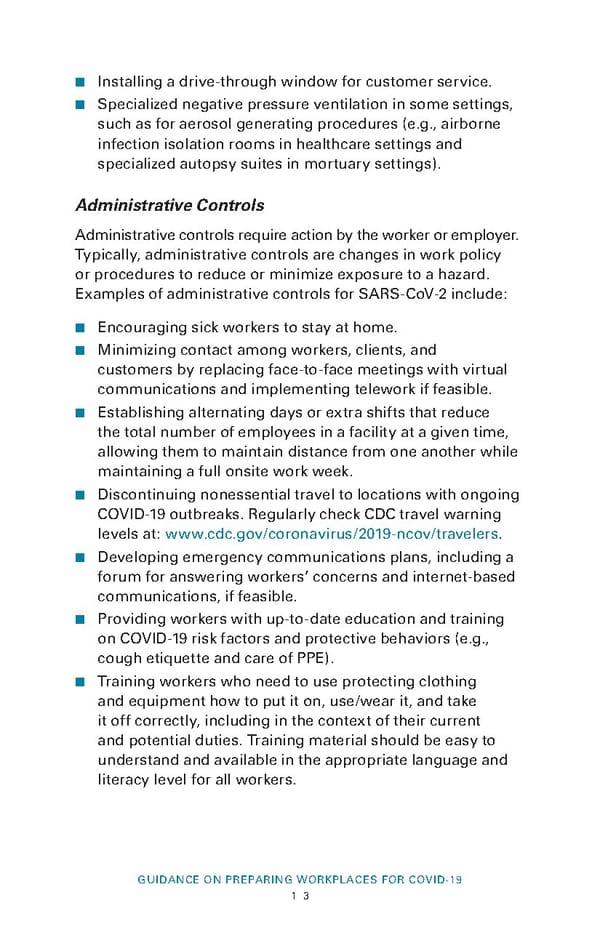■ Installing a drive-through window for customer service. ■ Specialized negative pressure ventilation in some settings, such as for aerosol generating procedures (e.g., airborne infection isolation rooms in healthcare settings and specialized autopsy suites in mortuary settings). Administrative Controls Administrative controls require action by the worker or employer. Typically, administrative controls are changes in work policy or procedures to reduce or minimize exposure to a hazard. Examples of administrative controls for SARS-CoV-2 include: ■ Encouraging sick workers to stay at home. ■ Minimizing contact among workers, clients, and customers by replacing face-to-face meetings with virtual communications and implementing telework if feasible. ■ Establishing alternating days or extra shifts that reduce the total number of employees in a facility at a given time, allowing them to maintain distance from one another while maintaining a full onsite work week. ■ Discontinuing nonessential travel to locations with ongoing COVID-19 outbreaks. Regularly check CDC travel warning levels at: www.cdc.gov/coronavirus/2019-ncov/travelers. ■ Developing emergency communications plans, including a forum for answering workers’ concerns and internet-based communications, if feasible. ■ Providing workers with up-to-date education and training on COVID-19 risk factors and protective behaviors (e.g., cough etiquette and care of PPE). ■ Training workers who need to use protecting clothing and equipment how to put it on, use/wear it, and take it off correctly, including in the context of their current and potential duties. Training material should be easy to understand and available in the appropriate language and literacy level for all workers. GUIDANCE ON PREPARING WORKPLACES FOR COVID-19 13
 Guidance on Preparing Workplaces for COVID-19
Page 14 Page 16
Guidance on Preparing Workplaces for COVID-19
Page 14 Page 16